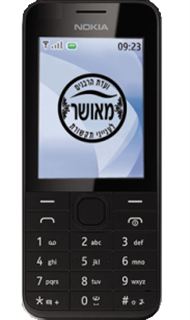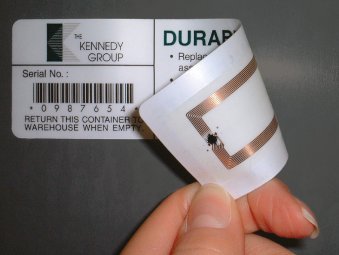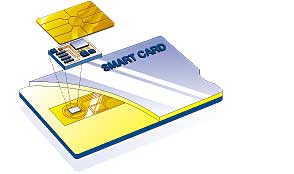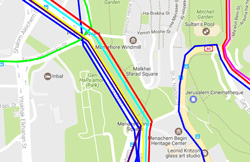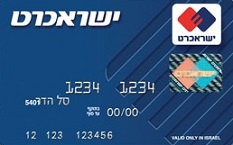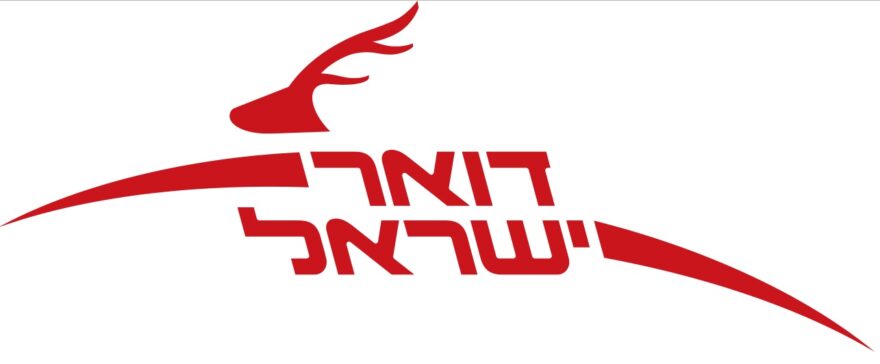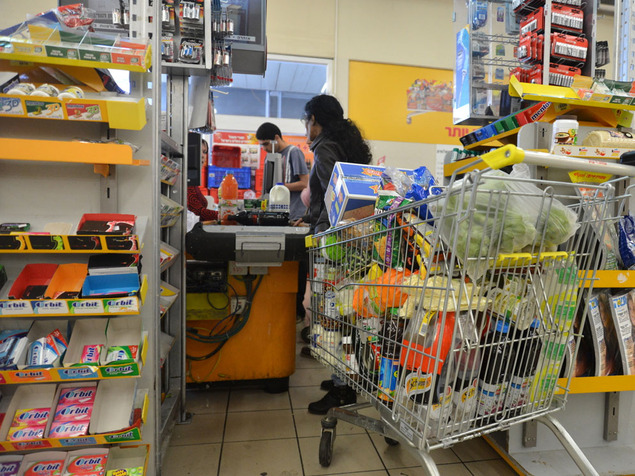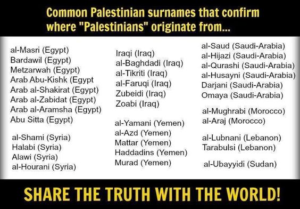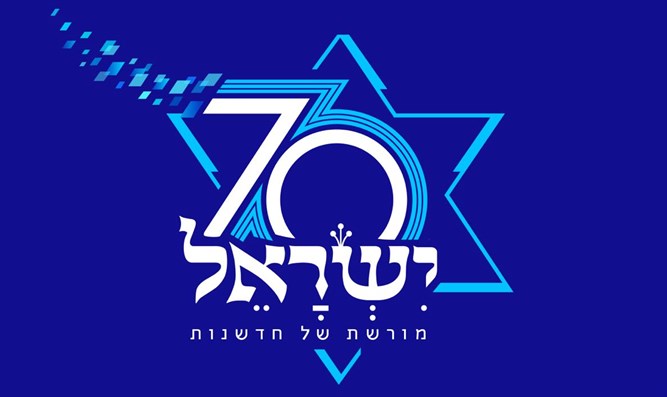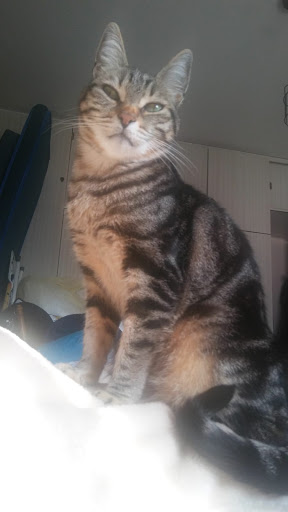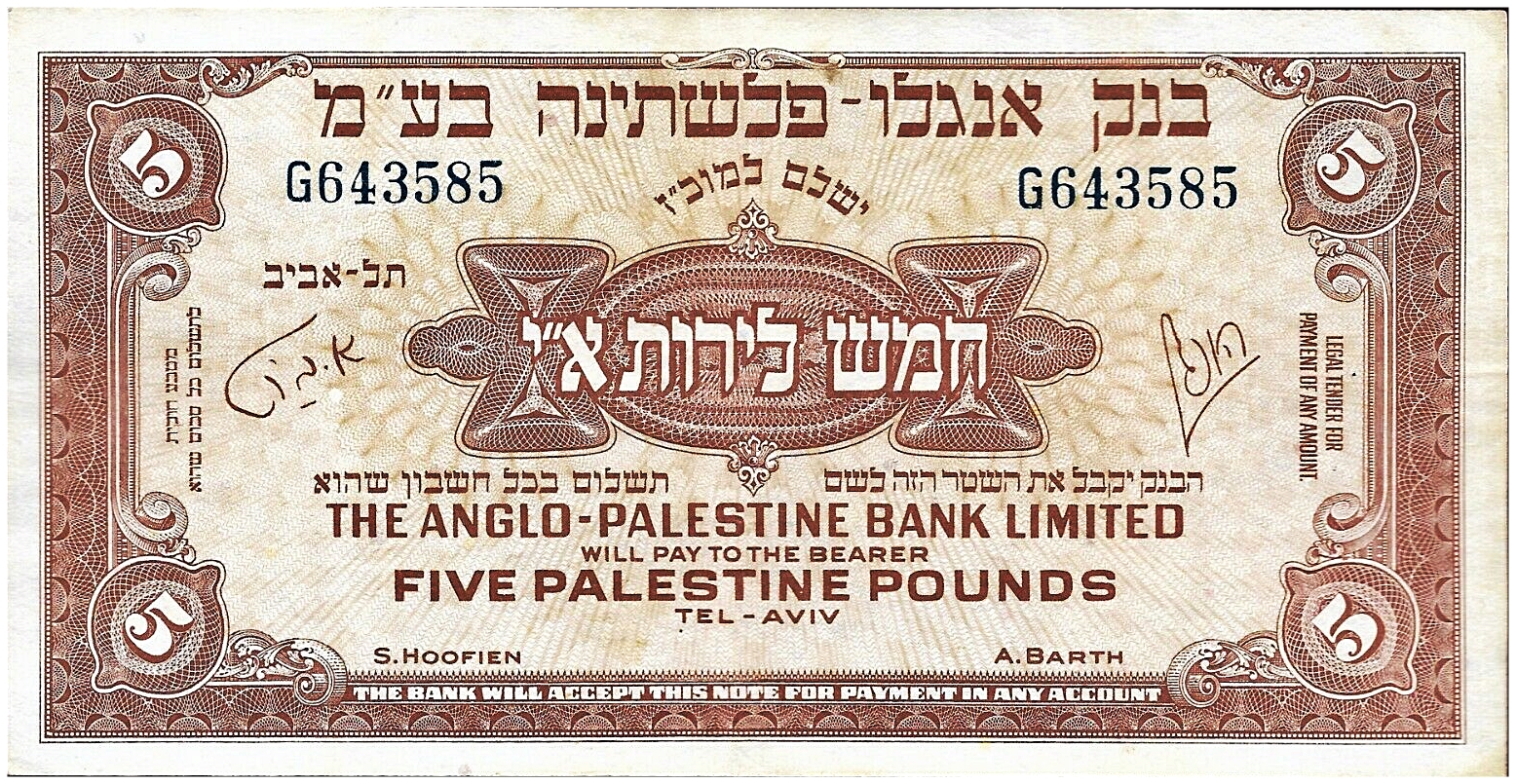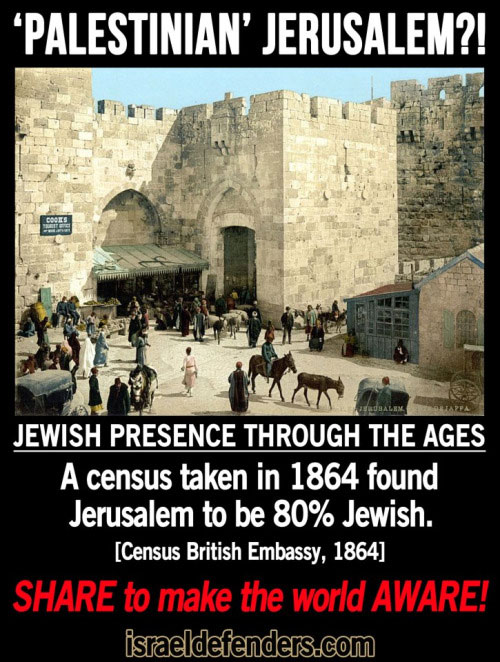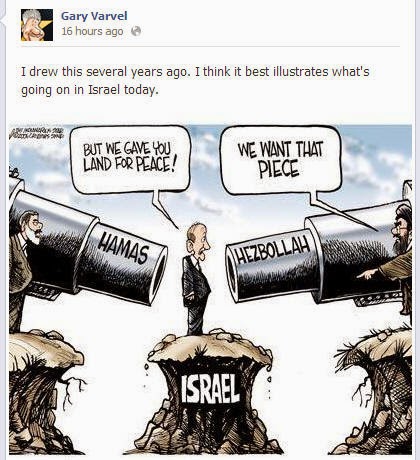Yom Yerushalayim יום ירושליםYom Yerushalayim יום ירושלים the holiday commemorating the reunification of Jerusalem, the Old City and regaining of access to the Kottel כותל (Western Wall) in the aftermath of the June 1967 Six-Day War. The day is officially marked by state ceremonies and memorial services. Watch and Listen to the real people that lived through the the events that lead up to the Six Day War in 1967 and the war itself. Six Day War – Israeli victory – Documentary – War of Redemption – Celebration at the Mercaz HaRav Yeshivah on Yom Yerushalayim 5781 |
|||
Jerusalem – A taste of the Holy City |
|||
|
2019 has always been a key date in Science Fiction, such as Blade Runner or The Running Man, But technology has caught up to fiction. What technology will we use in the Beit Hamikdash? These are just a small samplings of some ideas.One thing I would like to see is more use of Computerized voice messages with Kosher Phones of stead of requiring to have a Smart Phone. If Google can do it why not banks and others that use text messages for security codes? Besides the use of Bar Code have RFID Tags or Smart Cards on everything, Have everyone who is in the Beit Hamikdash wear a Photo ID Smart Card, both for Kohanim, Levim and for visitors. Color Code everything and have Color lines leading to major places like a bus map. Have voice and sound markers like at crosswalks in Israel (I know, Israel is years ahead of the US and Europe with aiding the Blind and Disabled). Israel already uses Electric Wheelchairs at the Kotel. |
|||
|
For Korban Pesach: The use of Commercial vacuum seal bags for meat. (The bag is very strong and they have been using it for decades with wholesale meat.) The inner bag is completely Kosher and Tahor, with all the Kashruth seals. A second outer Textured Foil ChannAl Vacuum Bags for insulation and Kashruth double wrapping. A Third Standard Rip proof FedEx outer bag with the Name and Address of the owner along with “Care and Handling” instructions in Hebrew, Yiddish, Arabic, Russian, English, French and Spanish with illustrations. Finally the outer carrying bag with handles. |
|||
Banking: Trusted Secure Payments: Paypal Visa MC Amex Discover – Until the Globalist go after you with SanctionsBuy locally, Charge locally, https://digital.isracard.co.il/ |
|||
Red Heifer Update! (June, 2020/Tammuz 5780)The Temple Institute 29June2020 |
|||
Eretz Yisrael in the Haftara by Rabbis Ethan Eisen and Tuly WeiszJerusalem’s Oldest Charity and the Secret to its RestorationFrom his home in Liadi, Russia, Rabbi Shnuer Zalman, the first Lubavitcher Rebbe, established in 1788 the Kolel Chabad soup kitchen in Jerusalem. For more than two and a quarter centuries, Kolel Chabad has been the personal tzedakah of each succeeding Lubavitcher Rebbe. The long lasting and beloved institution dispenses not only food and drink to those who need it most, but helps Yerushalayim assume its vital role as the “city of righteousness, faithful city” as described in our haftara. The Shabbat preceding Tish’a b’Av is known as Shabbat Chazon, taking its name from the opening words of the haftara. Chanted to the tune of Eicha, the Navi Yishayahu employs the same lament as Yirmiyahu, “How (eicha) the faithful city has become a harlot?! (1:21). How indeed? What is the Chazon (vision) of Yeshayahu? Although the opening passage of Yeshayahu does not detail Jerusalem’s devastation, it does contain the underlying reason for the destruction, while at the same time offers the solution for its restoration. As Hashem’s capital city, Yerushalayim exists on a different set of values. The Torah’s strategic defense plan for Jerusalem does not focus on metal detectors or riot police, but righteousness and justice. The first ruler of Jerusalem is Malki-Tzedek, king of Shalem (B’reishit 14:18), and the ruler of the city when Bnei Yisrael entered the land as a nation was Adoni-Tzedek (Yehoshua 10:1). The Radak (ibid.) explains, “for Jerusalem is the place of justice and peace; it cannot tolerate injustice and oppression and abominable acts for long.” Not only were the ancient kings of Jerusalem called ‘Tzedek’, but the city itself is referred to by seventy names, many of which refer to its inherent sense of justice. “Ir HaEmet” (Zecharya 8:3), “Nevei Tzedek” (Yirmiyahu 31:22), and in our haftara, “Ir HaTzedek” and “Kiryah Ne’emana” (Yeshayahu 1:25) – all reinforce the values essential to the Holy City. The call for Yerushalayim to be a haven for the vulnerable goes beyond feeding the poor and needy. Our tradition goes even further and looks out for those who we ordinarily shun. Chazal offer a remarkable interpretation of a central verse in our haftara: According to Rabbi Chanina, any court that finalizes a capital trial in a single day, and does not wait overnight to issue a final ruling, is considered murderous. Rashi explains: the court waits overnight to find a reason to acquit the defendant. Failure to uphold this procedural precaution, in the eyes of the Navi, is tantamount to murder. Yeshayahu here blames the judges of Yerushalayim for failure to be concerned with the most vulnerable members of society. Even someone on trial for murder is entitled to extreme compassion by the judges of the community, how much more so the widows and orphans! . The return of righteous leaders and judges who will lead the people to relentlessly pursue justice on behalf of the vulnerable allows for Hashem to return His presence to the city and the Holy Temple: “Then I will restore your judges as at first, and your counselors as at the beginning; after that you will be called ‘City of Righteousness’, ‘Faithful City’. Zion will be redeemed through justice, and those who return to her through righteousness” (v. 26, 27). It is particularly noteworthy that the oldest, continuously operating institu- tion in Israel, which predates the first Zionist Congress by more than a century and the founding of the State by nearly two, is a soup kitchen. The legacy of Kolel Chabad stands as a proud testament to the restoration of Yerushalayim in our generation. Rabbi Tuly Weisz is the director of Israel365 and editor of “The Israel Bible”; Rabbi Dr. Ethan Eisen is a psychologist and a new Oleh, as well as a rebbe in Yeshivat Lev Hatorah. Please send comments to Haftarah@TheIsraelBible.com Torah Tidbits #1239- D’varim – Chazon July 28-29, ’17 – 6 Av 5777 Avot: 3rd perek website: www.ttidbits.com |
|||
Using Technology in the Third Beit HamikdashFrom: The Temple InstituteWILL MASSIVE DIGITAL SCREENS allow worshippers to observe the work of the Kohen Gadol from a great distance? Will escalators carry pilgrims up to the Temple Mount courtyards? Will special buses designed in such a way that they can’t be tainted by spiritual impurity be employed to transport Passover pilgrims and their Pascal offerings? These, and many other fascinating and challenging questions were raised at this year’s 29th annual Temple Institute Passover Symposium, under the banner of “Integrating Modern Technology into the Holy Temple.” THE SIZABLE AUDIENCE which turned out on Wednesday afternoon, March 31st, the first day of chol hammed Pesach, (the intermediary days of Passover), was rewarded with a learned and lively presentation by six leading rabbis and educators, each focusing on specific aspects of the Holy Temple, its architecture, and the Divine service, and how it can be enhanced and facilitated through the introduction of today’s cutting edge technology. WILL THE BEIT MOKED – THE CHAMBER OF THE HEARTH, the dormitory for the kohanim who are serving in the Holy Temple, still house a large fireplace, or will central heating render the hearth obsolete? Will Passover pilgrims be able to roast their Passover offerings in electric ovens? Do such ovens fulfill all the strict halachic (Jewish law) requirements of what constitutes roasting? OVER THREE THOUSAND FIVE HUNDRED YEARS AGO, when the children of Israel left Egypt, they brought with them the most cutting edge technology of their day, and led by Betzalel, they employed all of their skills and worldly knowledge in the construction of the Tabernacle and the vessels that would be used in the Divine service. Throughout the nearly one thousand years that the two Holy Temples stood, technological advancements took place that helped to facilitate the performance of the Divine service and to enhance the beauty of the Holy Temple. MOST FAMOUS OF THE TECHNOLOGICAL ADVANCEMENTS WAS THE MUCHNI, a separate water reservoir added to the copper laver, solving a problem of water becoming impure if left in the laver overnight. This mechanism was conceived of, designed and executed by none other than the Kohen Gadol of that generation, known as ben Kattin. CENTURIES EARLIER KING SOLOMON had designed the “great sea” massive water basin which stood outside the first Holy Temple. The historic refurbishing of the second Holy Temple ordered by Herod took advantage of the latest first century CE science and technology. AS DISCUSSED AT THE SYMPOSIUM, Torah is very specific concerning the dimensions and materials of the various service vessels. The same principle holds true for the basic layout and structure of the Tabernacle and later the Holy Temple. However, where the Torah does not designate specifics, for example, as to what decorative enhancements can be incorporated into the vessels, the artists and artisans are granted free creative license. NO ONE BUT THE KOHEN GADOL is permitted to enter the Holy of Holies, and he enters it only one time a year, on Yom Kippur. But could a camera be placed within the Holy of Holies, allowing others to witness the Kohen Gadol when he places the burning incense pan before the ark of the covenant? Would this constitute “seeing the Holy of Holies,” which is strictly forbidden, or would viewing the Holy of Holies via a camera be considered as seeing indirectly, and would that then render it permissible? THIS IS JUST ONE EXAMPLE of a wide range of issues raised at the symposium, all of which will need to be addressed when the Holy Temple is built. IN ADDITION, AN ANIMATED THREE DIMENSIONAL ARCHITECTURAL DESIGN for the Lishkat HaGazit, the Chamber of Hewn Stone, the seat of the Great Sanhedrin, commissioned by the Temple Institute was shown to the public for the first time. Half in the sanctified courtyard, and half in the profane, just as it was in second Temple times, the new design also calls for the two story structure to be half underground, incorporating within it a parking facility for the seventy one judges, and a viewing gallery for the public. AMONG THE DISTINGUISHED SPEAKERS WAS ISRAEL’S serving Minister of Science and Technology, Rabbi Professor Daniel Hirshkovitch, a mathematician by profession, who explained how sophisticated mathematical principles can be employed to reveal essential knowledge concerning the design and dimensions of some of the vessels referred to in Torah, but whose precise measurements weren’t delineated. In turn, Rabbi Professor Hirshkovitch revealed the great knowledge of mathematics, physics and engineering possessed by our ancestors. IN ALL, IT WAS AN ABSORBING AFTERNOON for all who attended. When we talk about and plan the rebuilding of the Holy Temple, we are not talking about an archaeological restoration in which no effort is spared to painstakingly recreate an ancient edifice. The Holy Temple of tomorrow will be a living viable center of worship for all mankind, incorporating all the relevant 21st century technological advancements which can be used to enhance the service and enrich the experience of the pilgrims, and most importantly, give honor to G-d. May we build it soon! These are interesting questions indeed. However, would the use of such technology minimize the miraculous nature of the third Beit Hamikdash? Would the use of such technology minimize the serenity and holiness of the third Beit Hamikdash? For the first question, I’ll provide 2 reasons why it does not: Regarding the second question – would technology minimize the serenity and holiness of the Beit Hamikdash – this is a matter of taste. We use technology in our Mikdeshei Me’at nowadays – we have atomic alarm clocks to tell us when HaNeitz HaHama is, we have electronic signs telling you when to say Mashiv Haru’ah, etc. Some may argue that when we have our real Beit Hamikdash, it should be no different. After all, we’re not Amish. It will be interesting what will be decided. May it be rebuilt soon – במהרה בימינו אמן. |
|||
From Dixie Yid:Sunday, March 24, 2013 Guest Post – Technology in the Third Beis Hamikdashhttp://dixieyid.blogspot.co.il/2013/03/guest-post-technology-in-third-beis.html I have had conversations with people of the years about how technology would be incorporated into the third Beis Hamikdash when it will be built. But my friend wrote up a “handbook” for those offering korbanos in the third Beis Hamikdash, imagining in detail what it would be like, and incorporating many halachos in the essay as well. So enjoy the below guest post and IY”H, may we be zoche to see how technology will be incorporated soon in our days! Bais Hamikdash Tech Update Next, korbanos need to be registered on the system with full owner information and korban designation before offering. This can be done online, by cellphone app, or on one of the dedicated terminals installed on the base of the temple mount. Any changes in owner information (particularly for korban pesach group status) needs to be completed before shechita. No exceptions. Owner information will be checked with Department of Health records in real time. A chatas whose owner has died will not be offered. Several help stations have been strategically placed throughout the Azarah. If the KOD has forgotten which avodah he needs to perform or where, he can just scan the kli and a full diagram will come up. For semicha, the owner(s) will receive a text message when their animal is ready to go. They will then enter the azarah and proceed directly to the automated hoist number of their korban, perform the semicha, and leave. More viewing of the avodas can be done by the AzarahCam at any time. The system will go like this. The person purchasing a mincha will enter their information and the korban needed, whether it is challos or wafers, deep fried or shallow fried, kohen owned, etc. A ticket will be generated and sent to the bakery to fill the order. For a minchas nesachim, the ticket will not be generated until the blood of the associated korban is sprinkled. The bakery employee will place the finished mincha in the window facing the kodesh in an ordinary container. The kohen will take the mincha, scan it for the owner info, and place it in a kli shares while verbally consecrating it for its owner. He will then proceed to perform the proper avodah of the mincha. The system will assist in reminding the kohen of the proper procedure, whether it needs waving, hagasha, kemitza, etc. with audible alerts. Any questions on identifying a particular mincha can be easily resolved with a quick scan of the kli. A korban Todah will be prevented from being slaughtered until all the loaves have been baked. Salt will be added to all offerings at no charge. The system will also arrange the proper order of offerings. This has previously been a very difficult principle to achieve by hand. For example, chatas blood comes before olah blood, but olah limbs are offered before chatas sacrificial parts. The queuing will be done automatically and signal the nearest KOD to perform the next avodah. Audio and visual alerts will warn any KOD about to perform an avodah out of order. Additional tags will be affixed to the cut up parts of the korban in the flaying area, near the sinks. Absolutely NO meat is to be placed in the Mikdash Refrigerators without proper tags. Tracking the hides are important for determining ownership. Depending on circumstances, the hide may belong to the mikdash, the kohanim, or the donor. We will auction off each hide and track the sale price to the owners. At the end of each day, all of the kohanim that swiped in (even those with a mum that performed non-avodah labor, but not Mikdash employees) will be automatically credited their share by direct deposit.
Cooking pots have been tagged as well. Pots have to be koshered after use with korbanos, within the time frame allowed for eating the korban, unless the pot is used for another korban, which resets the clock again. This system will track each pot and signal those needing koshering.
The mizbeach has been outfitted with special metal-free sensors. As the kli filled with blood approaches for sprinkling, the KOD will be gently prompted as to which corners to approach and the proper order, and whether sprinkling needs to be done above or below the red line. Similarly, birds post melikah will be sensed if the sprinkling is about to be performed in the wrong place. The Ulam has sensors installed at the doorway to prevent any korbanei chutz from entering lifnim accidentally. Sensors and alarms have been set up around all the exits. If a korban that is not allowed to leave the area approaches the exit, an alarm will sound. Similarly, the system will guard against theft of Mikdash property. Outside in the Ezras Nashim, large screen displays have been installed with real time information on offering status. Text or email alerts to the owners are available at no extra charge. The Mikdash Bank Previously, there were 13 ‘horns’ that held coins used for purchasing sacrifices for when the altar was unoccupied. The Kohen entering the room where they were stored had to enter there barefoot in clothing without a hem or pockets etc. -a difficult procedure. We have eliminated this, and set up a Mikdash Bank, with multiple accounts. Balance and activity information is openly available online. All donors will receive a receipt number that can be tracked, with their name listed if they desire. Any withdrawals will list the kohen signing off on it, as well as the tag number of the animal purchased. The main branch of the bank is located near the base of the Temple Mount, eliminating the need for private money changers. |
|||
Tisha b’Av: The Third Holy Temple Plans Have Begun |
|||
Red Heifer Update: Adar 5780/March 2020The Temple Institute 11March2020 English subtitles included (click on cc on bottom right of video)! |
|||
Raise a Red Heifer in Israel / לגדל פרה אדומה בארץ ישראל |
|||
Blueprints and Computer Animation of the Sanhedrin Chamber of Hewn Stone |
|||
Historic Reenactment of the Omer Barley OfferingThe Temple Institute Videos |
|||
Accessible JerusalemSeptember 11, 2016 The Israeli people are known for an outgoing willingness to help anyone on the street, and this extends without question to those needing disability access, such as assisting blind people with walking sticks to cross streets, and patience when awaiting the wheelchair door on a public bus. This approach comes from an overall Middle Eastern warmth, as well as the fact that many war veterans suffered injuries leading to disabled access needs. Of note, in December, 2012, the Knesset passed a comprehensive law requiring most venues to be handicap-accessible by 2018, from wheelchair access to hearing and sight impaired services. Do keep in mind that while most people are happily supportive, the Jerusalem streets might not be: Jerusalem is hilly, with sidewalks often narrow or nonexistent. The Old City streets and sidewalks, in particular, are largely cobblestoned and unstable. At the same time, most major museums and attractions and several hotels cater for the disabled. In addition, there are transportation options available. Tourists can learn more about accessible Jerusalem restaurants and Jerusalem attractions on itraveljerusalem.com. We’ve put together a list below of additional helpful contact information for organizing best accessibility. Access Israel – Information and Activism on Disabled Access in IsraelStarted by someone who needed disability access in Israel, the Access Israel site offers comprehensive information on tourism sites, accommodation options, restaurants, events and taxis that are accessible to special needs travelers. Phone: +972-9-7451126 Yad SarahYad Sarah (http://www.yadsarah.org/index.asp?id=106) offers transportation to and from Ben Gurion Airport, intracity and intercity transportation vans, and specific services for tourists in need of disability services. In addition, they offer all kinds of medical equipment for rent, from oxygen to walkers and everything in between. Phone (Tourism Desk): 972-2-644-4664 Egged Buses – List of Accessible Jerusalem Bus LinesEgged offers many accessible intercity lines in Jerusalem with a rear entry door set up with automated wheelchair access. Car Rentals for Special Driving NeedsMany rental car companies provide cars for special driving needs – contact your preferred rental car company for more information. In particular, the Eldan Car Rental company offers 1600 cc automatic cars with left or right-hand controls – best to reserve 10 days in advance. Read more about car rental here. MilbatMilbat has a site in Hebrew offering products that ease the daily life of those with disabilities, and also assisting with transportation options. Phone: +972-3-5303739 |
|||
Yom Yerushalayim יום ירושליםYom Yerushalayim יום ירושלים the holiday commemorating the reunification of Jerusalem, the Old City and regaining of access to the Kottel כותל (Western Wall) in the aftermath of the June 1967 Six-Day War. The day is officially marked by state ceremonies and memorial services. Watch and Listen to the real people that lived through the the events that lead up to the Six Day War in 1967 and the war itself.Six Day War – Israeli victory – Documentary – War of RedemptionSix Day War – Israeli victory – Documentary – War of Redemption ירושלים במרכז – שידור חי ממרכז הרב – Celebration at the Mercaz HaRav Yeshivah on Yom Yerushalayim 5781Posted 10May2021 ערוץ 7: Jonathan Pollard’s Remarks at the Central Thanksgiving Celebration to mark the 54th anniversary of the unification of Jerusalem. He starts speaking at 02:08:00 or thereabouts in the video. |

